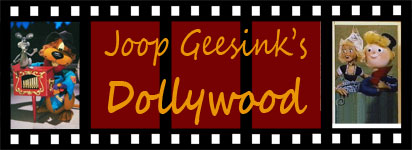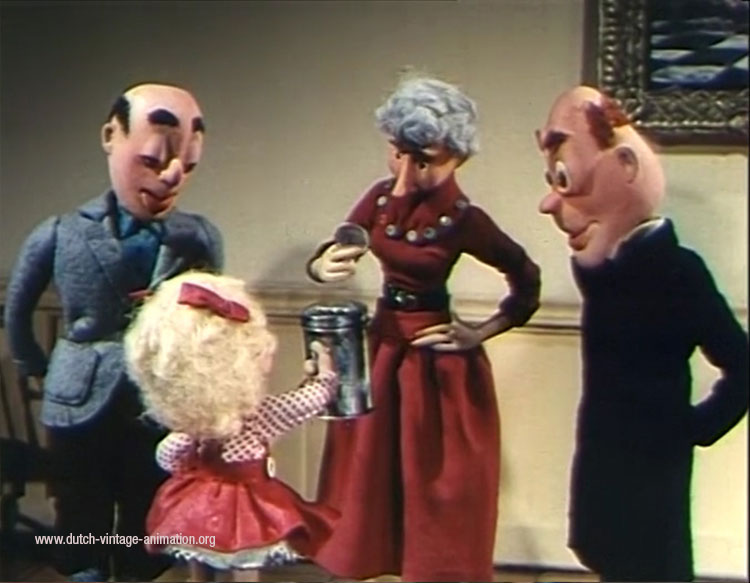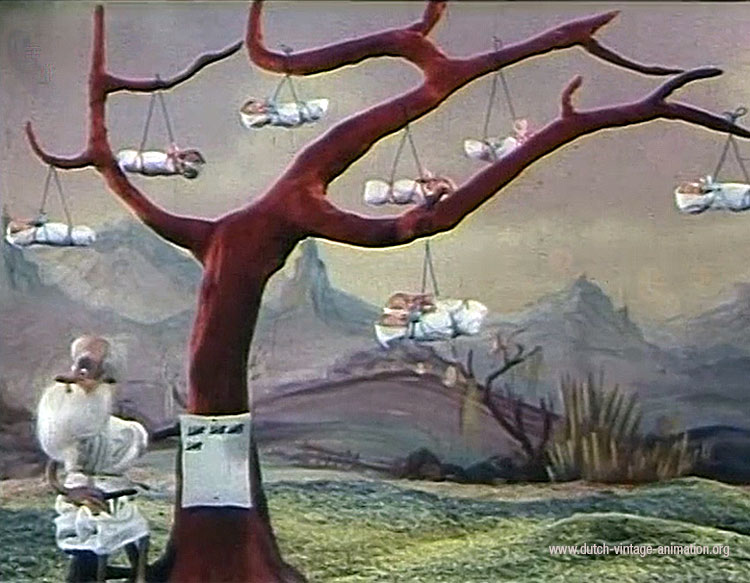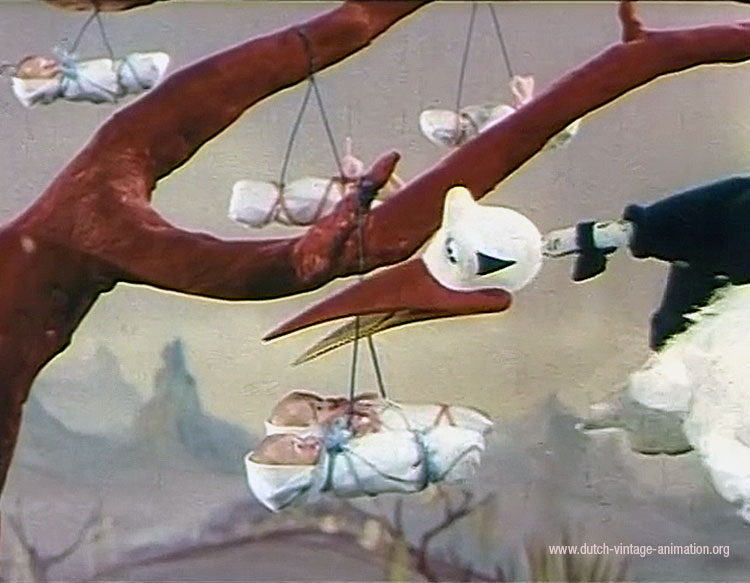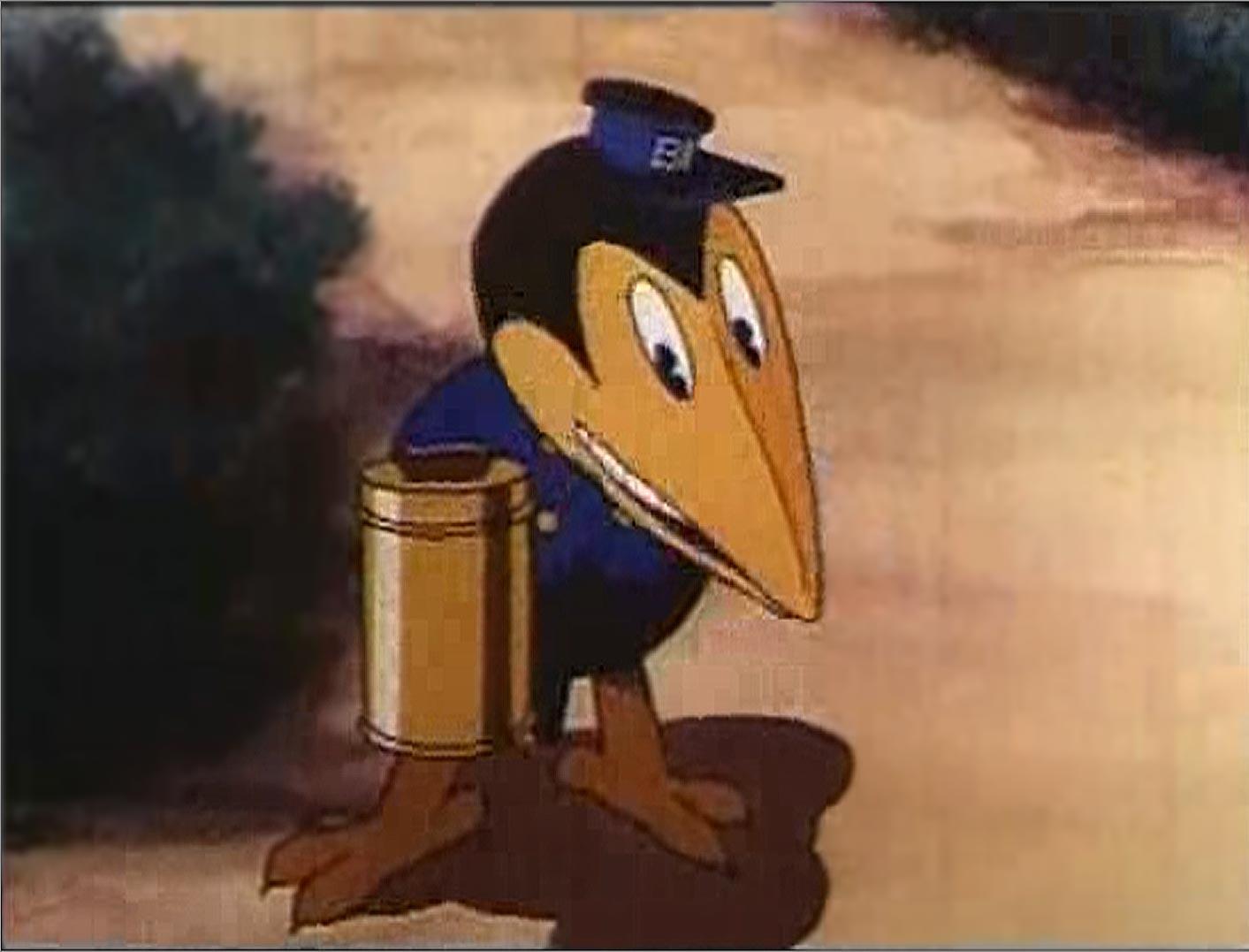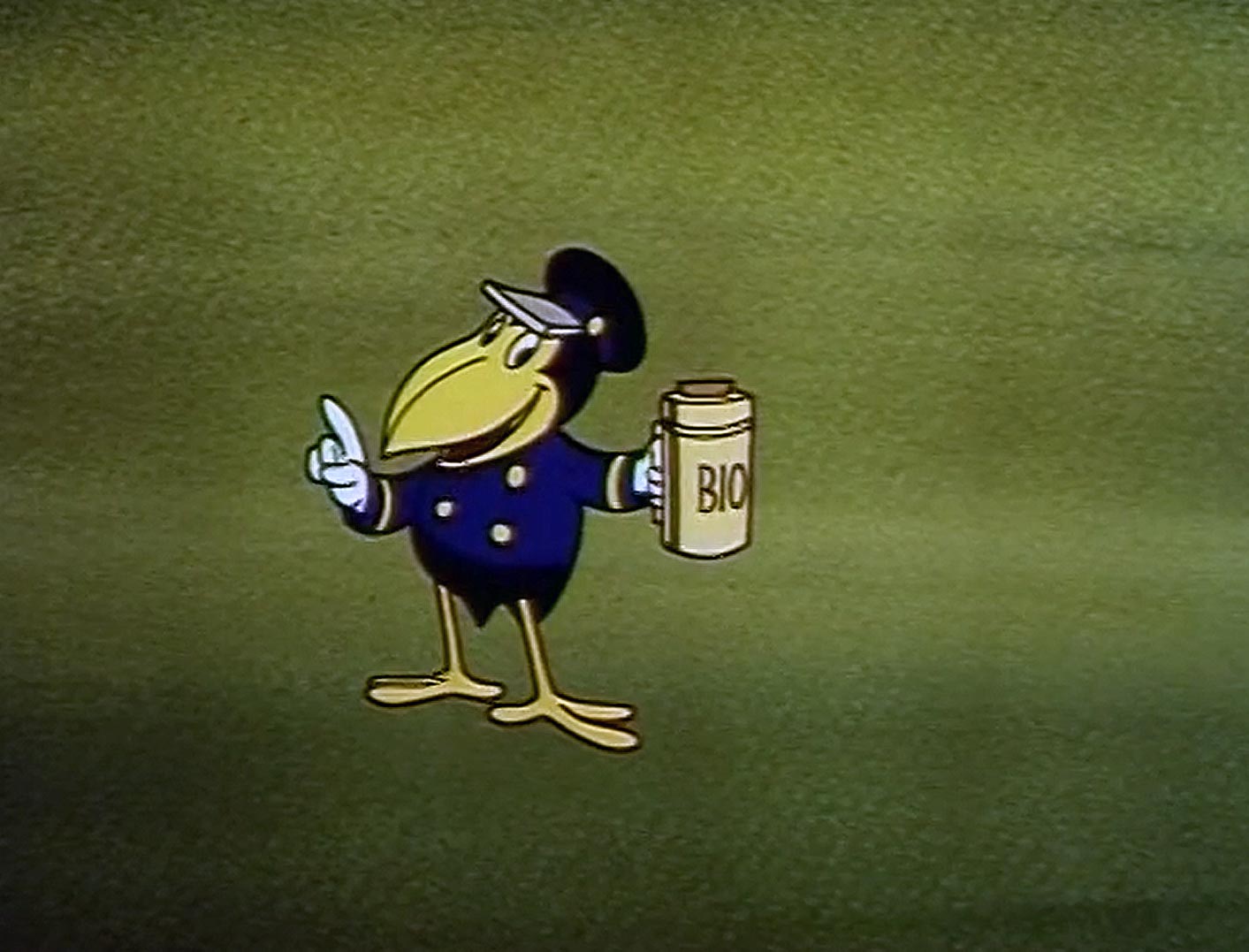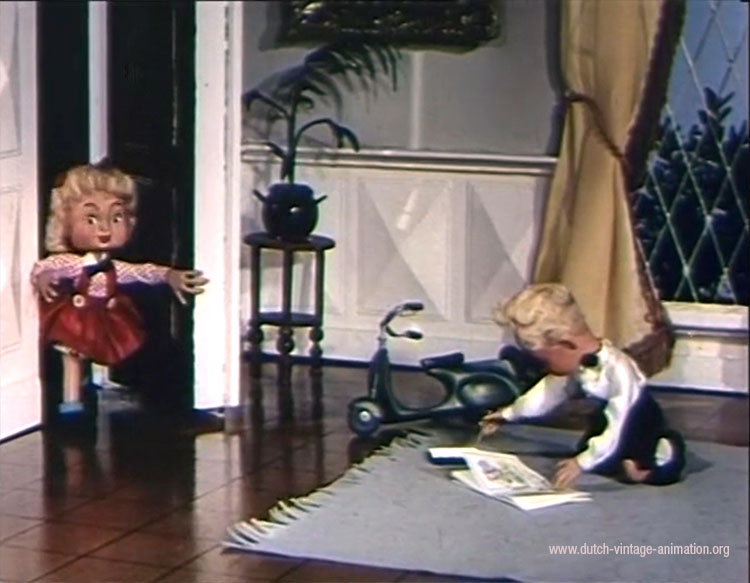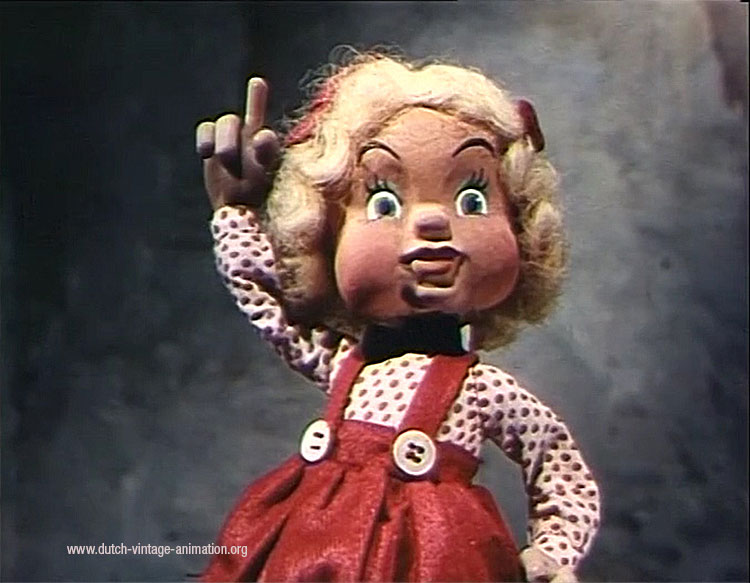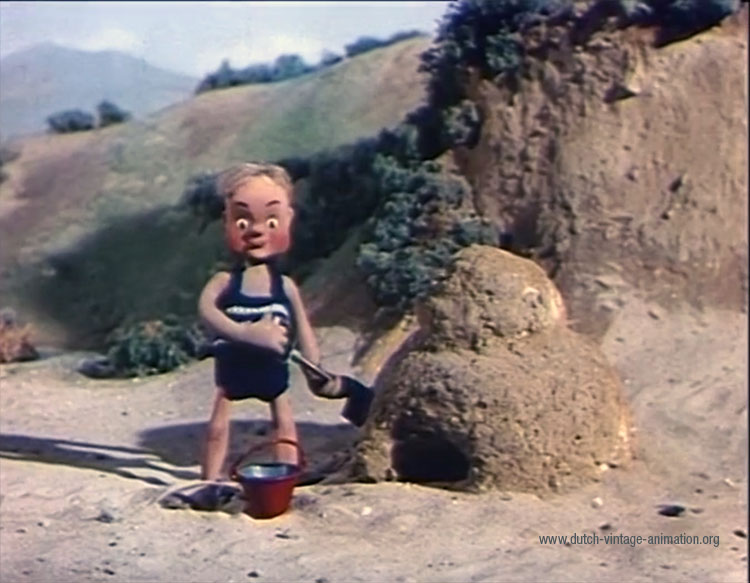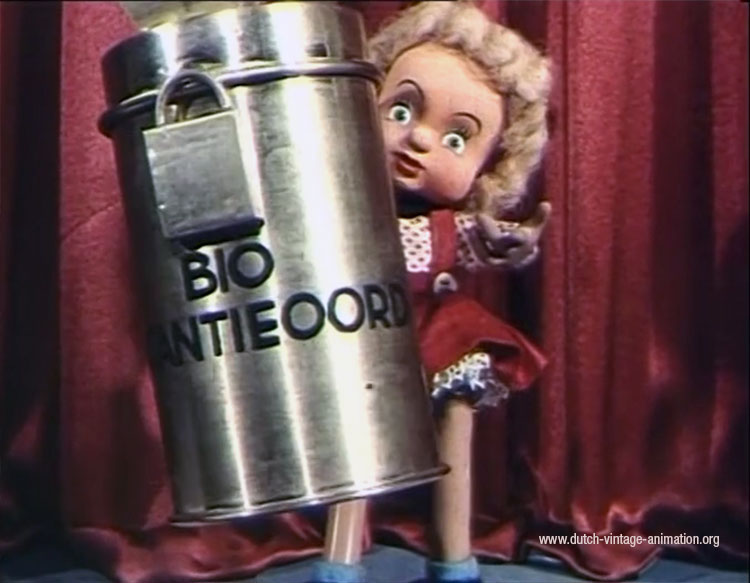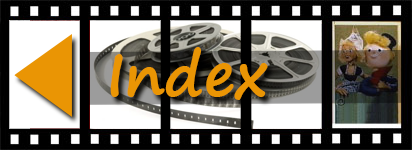Girl growing up in a modern, healthy environment finds her little brother in a deprived neighbourhood. He looks unhealthy. So the girl makes a collection box to be able to send her brother on holiday to a healthier environment. The idea then arises to hold a national collection. At the end of the film, she stands on the stage in front of the screen in a cinema and addresses the audience: 'Are you going to put something in it? Hey...Great! Thank you very much.'
The context
To understand the context, this information is useful.
The BIO Children's Rehabilitation Centre Arnhem was founded in 1952 as a "Bio-Rehabilitation Centre" or "Bio-Holiday Resort" by the Bio-Holiday Foundation. This foundation had already operated a holiday resort for sick children and children from poor families in Bergen aan Zee since 1931. The rehabilitation centre in Arnhem was set up for the treatment of polio patients. (Source: Wikipedia)
Stork
The girl tells us that she and her brother were hanging from a tree with other children until they were picked up by a stork. Unfortunately, her brother fell down on the way. The girl grows up in a rich family but she still misses her brother and goes looking for him. Finally, she finds him in a slum, sick in bed.
Horrified, she says: 'We were both the same on that tree, weren't we? This is a free poetic way of conveying that all children should have the same rights to a healthy development.
Non-Dutch viewers will notice that the spoken text is rather long. This is caused by the fact that everything that is shown is also told once.
Trivia
The film ends with a scene in which the girl holds out a collection box to the viewer.The intention was to create an image that gave the impression that the girl was actually in the cinema hall, where you as a visitor are present.
From the first day this film played, an actual collecting tin was circulated in the cinemas for this purpose. There were dozens of them in the Netherlands. Often, the BIO film was the last film in a series of advertisements and after that there was a break in the theatre.Then the theatre lights went on. This way, the operator could follow the collection box and the visitors had the opportunity to look for their wallets. The BIO Children's Rehabilitation Centre has been using the medium of 'fundraising film' for decades. The first one dates back to the 1930s. There, none other than George Pál was asked to make an animated film for the holiday resort in Bergen aan Zee. Pál used a cartoon character, a raven. The raven was the doorman who asked for money for entry. In the 1970s, the raven was redesigned (with Pál's permission) by Marten Toonder's cartoon studio. This was a mix of animation and live action. The collection box was also passed around the hall.
Childishly told
This film was told from an imaginary child's point of view. In the early 1950s, this was an original and successful method of transmission.
Other movies
George Pal made a cartoon for the Bio holiday resort (ca 1937). The building is recognisable, which also appears in "We Grew". This cartoon also introduces the crow, which was later used by Toonder Studio's in "De Kraai vertelt" (The Crow Tells") (1980). By then, the BIO holiday resort has long since become a children's rehabilitation centre. The crow also looks a lot more sympathetic.

Credits
| Title: | "We Grew" / "Wij groeiden" (1952) | |
|---|---|---|
| Client: | Stichting Bio-Vacantieoord | |
| Year of production: | 1952 | |
| Duration: | 2 minutes | |
| Animation: | Unknown, probablyJószef Misik or Jules Balázs | |
| Puppets: | Harry Tolsma | |
| Format: | 35 mm, Technicolor |
